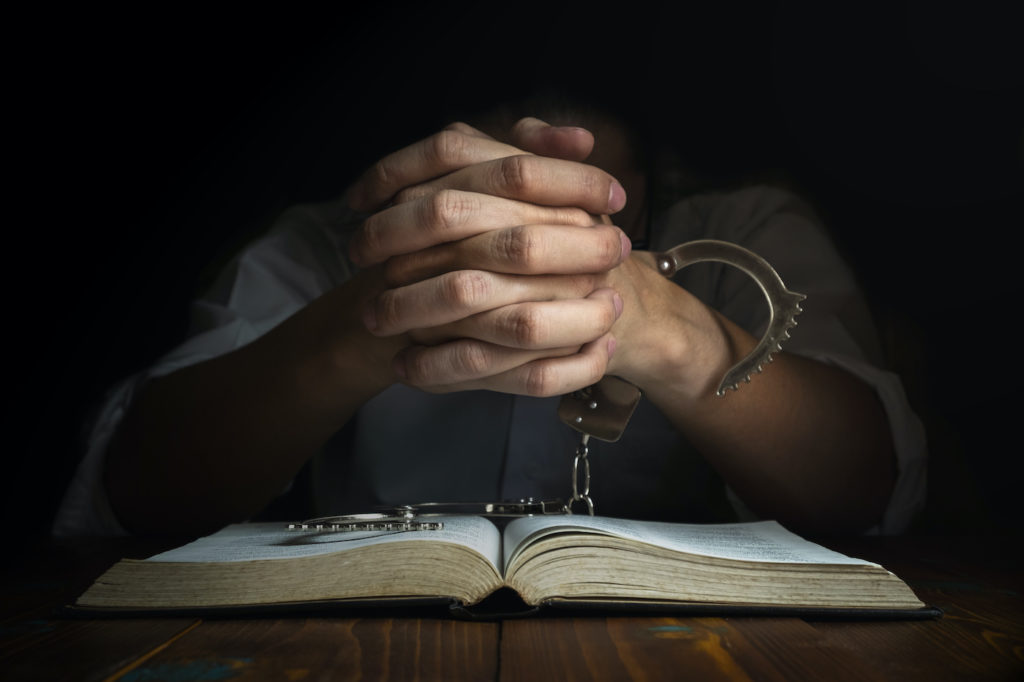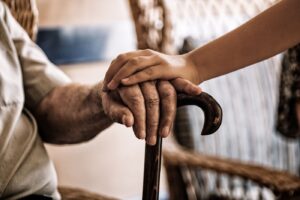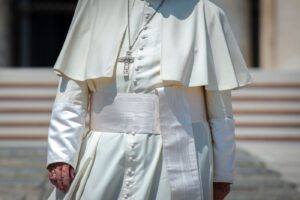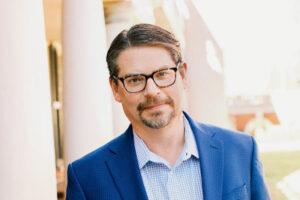It’s hard to overstate the current challenges facing the American prison system. Rampant violence, extremely high levels of offender recidivism, mounting taxpayer cost, and difficulty retaining employees, typify recent headlines from the world of American “corrections.” But prisons do little to meaningfully correct offenders’ past transgressions, nor do they deter future offending.
Many American prisons have become so violent that they comprise what Cambridge University prison scholar Alison Liebling describes as “failed state” institutions. In “failed state” institutions, even the most basic levels of safety and control are not provided by authorities. For an example, look no further than the New York Times, which recently reported on the horrifying conditions at Rikers Island, where whole sections of the prison are run by detainees, who fashion make-shift weapons out of the complex’s crumbling buildings. Staff members and detainees have been beaten and stabbed. One detainee reports having been denied food for two days by the gang that controls his unit. Thirteen people have died at Rikers so far this year.
These institutions not only cause more human damage than they prevent, they produce emotionally crippled citizens and elevate the likelihood of reoffending. New research from the nonpartisan Sentencing Project in Washington, D.C., moreover, highlights the likelihood of “mass incarceration” becoming a permanent feature of American society.
In the midst of these failures, a new, more successful model of correctional programming is quietly taking hold in the United States. The model draws on innovative work inside some of America’s largest and most violent prison environments. These new approaches are being developed primarily at maximum-security prisons, which have long been under-resourced until lethal violence has boiled over. In the face of this reality, prison administrators have become increasingly open to “outsourcing” rehabilitation programming to religious volunteers. As a result, in an increasingly large number of prisons, religious programming is now the dominant source of inmate rehabilitation.
Start your day with Public Discourse
Sign up and get our daily essays sent straight to your inbox.An Interracial, Ecumenical, Personal Church
For many inmates, religious practice not only provides a momentary escape from prison life. It does something deeper and much more foundational: it helps them redefine and reclaim their lives.
Over the past ten years, as we conducted the research described in our new book, we have had the distinct privilege of sitting with men in prison as they engaged in religious worship. Many of these experiences have taken place in America’s largest maximum-security prisons, including Louisiana State Penitentiary at Angola, Sing Sing (NY), Mississippi State Penitentiary at Parchman (MS), Darrington Unit Correctional Institution (TX), and Lawtey Correctional Institution (FL), among several others. We have been struck by the reverence, energy, and seriousness with which inmates cultivate a practice of faith.
Perhaps the most striking feature of “church in prison” is the robustly interracial character of the “congregation.” As Dr. Martin Luther King, Jr. pointed out in 1960, American religious practice is nothing if not racially segregated. By necessity, religious worship in prison, however, is both racially integrated and remarkably ecumenical. To witness the sign of the cross and hear a call-and-response during one and the same ceremony—sometimes even from the same practitioner—is not uncommon. For long-time inmate religionists, cross-fertilization of worship becomes a normalized practice, with inmate lifers often referring to themselves as “Bapticostal,” “Catholipalean,” or as one Florida inmate put it, “agnosti-pizza” (“I just come for the pizza”).
Religion in prison is characterized by a relaxed and non-hierarchical openness to various forms of religious practice in a doctrinally neutral space. It is first and foremost preoccupied with the meeting of immediate physical and spiritual needs. Prisoner prayer groups, Bible studies, outside church volunteer groups, yoga practitioners, Buddhist meditation leaders, and many others all combine to create a remarkably elaborate menu of religious options for prisoners. Diverse practitioners and non-believers are welcomed by faithful inmates, who understand themselves to be imperfect seekers. Perfectionism in faith and the performative gestures that often accompany corporate worship are simply not present in prison. By definition, everyone there has fallen.
In general, religious practice in prison emphasizes its private dimension. Steeped in the twelve-step theologies of addiction recovery programs, in which “finding God as one understands God” is the task, many inmates adopt surprisingly tolerant views concerning the religious doctrines of their peers. As a result, practitioners are more relaxed about doctrinal strictures and much less attentive to the “culture war” battles playing out beyond the walls of their institution. But that does not mean inmates do not take their faith seriously. On the contrary, prison religion is “everyday religion”—religion that is used, cultivated, and implemented. The once-per-week piety of Sunday congregants is largely absent in prison.
The Evangelical Response to the Mass Incarceration Crisis
Evangelicals’ deeper engagement in maximum-security prisons began in the mid-1990s, after the Democrat-dominated U.S. Congress abolished Pell Grants for convicted felons. Long before it became fashionable to suggest that evangelicals care little about social justice, New Orleans Baptist Theological Seminary (NOBTS) stepped in to singlehandedly salvage collegiate education for prisoners at Angola (Louisiana State Penitentiary), and later at Parchman (Mississippi State Penitentiary) and elsewhere. As part of the 1994 Crime Bill, promoted by then-Senator Joe Biden and Democrat President Bill Clinton, Congress revoked Pell Grant eligibility for convicted felons, removing this primary collegiate education resource to inmates nationwide.
For then-Warden Burl Cain of Louisiana State Penitentiary at Angola, Pell Grant revocation posed a threat to both his job and his personal welfare. As the leader of the largest and most violent prison in America at the time, Cain viewed collegiate education as a powerful resource for reducing violence and making his prison less punitive. Fearing prisoner unrest and facing continuous overcrowding, Cain reached out to NOBTS to inquire about the school’s offering some courses as a gift to his prison. As Cain hopefully put it, he wanted NOBTS faculty to come “on campus” at Angola.
After initial reluctance, NOBTS surprisingly decided that instruction at Angola affirmed its mission. The school opened a fully-functioning seminary extension center on the grounds of the prison in 1995. Four years later, NOBTS graduated its first small cohort of “trained ministers,” developing a tailored curriculum focused on process counseling and conflict management.
In addition to salvaging collegiate education for prisoners, NOBTS accomplished something more novel: they pierced the hermetically sealed environment of America’s largest maximum-security prison. Suddenly vested with responsibility for the caretaking of prisoners, NOBTS introduced a host of outside faculty and visitors to the prison. Angola indeed became more like a campus—benefitting from increased philanthropy to the prison, but also increasing the transparency produced by the outsiders now part of a new prison regime.
In what is quickly becoming a nationwide model, new public–private partnerships between prison wardens, religious educators, and faith-motivated volunteers are now operating in twenty-seven states and over seventy U.S. maximum-security prisons nationwide. Paid for with private external funding and endorsed by powerful legislative advocates, this prison reform movement is not dissimilar to that initiated by the Religious Society of Friends or Quakers. The Quakers’ American Friends Service Committee has a long history of engagement in U.S. prison reform that’s still active today.
The Success of the “Wounded Healer” Model
Evangelicals do not monopolize prison ministry, but they certainly dominate it. As The Atlantic reported in 2015, “Even though Catholicism is the largest Christian denomination in the United States, Catholic prison chaplains and volunteers are far outnumbered by their Protestant brethren.“ That’s largely because evangelicals simply have the most determined ministry for prisons. As a University of Scranton professor of criminal justice professor put it, “They’re the ones who have the most intense faith and the most intense belief that you have to go into prisons and help people.”
Yet evangelicals are curiously often denied credit for their extensive, quite progressive, and hugely successful efforts in America’s prisons. Participation in voluntary religious communities sponsored by evangelicals bolsters the lives of inmates with social capital otherwise totally inaccessible to them. Small-group prayer in prison, for example, has been shown to be highly prosocial and transformative in practice.
Perhaps the most important key to the success of evangelicals’ rehabilitation efforts is their embrace of the “wounded healer” model of ministry.
In fact, decades of criminological research document the salutary benefits of religious programming for prisoners and prisons. Such programs reduce social isolation and shame among prisoners, offering emotional and network pathways that support re-biographing and fresh starts. Even modest interventions like attending volunteer-led Bible studies in prison have been found to be associated with significant recidivism reduction following release from prison. For example, a new study finds that a one-week faith-based curriculum can reduce post-traumatic stress disorder as well as enhance prosocial and virtuous behavior among jail inmates. This is just one example from a significant body of research literature confirming the positive and prosocial effects of religion on crime reduction and restorative justice approaches.
Perhaps the most important key to the success of evangelicals’ rehabilitation efforts is their embrace of the “wounded healer” model of ministry. Since the 1950s, criminologists have recognized the particular effectiveness of previously convicted citizens helping offenders reform. Faith-based and addiction-focused programs have been especially active in using peer-based rehabilitative programming. Former addicts are often viewed by those in recovery as the most effective drug treatment counselors—not because they have academic credentials in addiction therapy, but because they possess direct experience overcoming the challenges of addiction.
Importantly, the benefits of peer counseling are bi-directional, bearing fruit both for those receiving help and for those offering it. Indeed, mentors often view themselves as the real beneficiaries in their relationships with offenders.
Remarkably, so many prisoners—even those who are serving life sentences—have told us that the next Great Awakening will come from prisons.
A New, Prison-Led Religious Awakening?
Many of the same challenges facing prisons and prisoners also face those who live outside the prison walls: the search for healing, meaning, and companionship is common to us all. Could it be that one of the best examples of a church without walls is the church behind prison walls? Could faith-based approaches to prison problems offer lessons for society? Remarkably, so many prisoners—even those who are serving life sentences—have told us that the next Great Awakening will come from prisons. This prison-led awakening would reclaim a core Christian principle: serving others is the best means of serving God and oneself.
In the meantime, correctional facilities must grapple with unprecedented levels of overcrowding, violence, and suicide, as well as rampant mental illness among inmates and aging prison populations. The tightening of correctional budgets, and the resulting loss of vocational, educational, and treatment programs pose additional difficulties.
As we face this host of formidable challenges, we should be thankful for faith-based approaches, led by faith-motivated volunteers and prisoners. They are proving to be some of the most innovative, holistic, and effective programs available in correctional facilities today.
This essay is adapted from the authors’ new book (co-authored with Sung Joon Jang), which describes the rapid spread of peer-based ministry programs in U.S. prisons and is titled The Restorative Prison: Essays on Inmate Peer Ministry and Prosocial Corrections (Routledge 2021).














